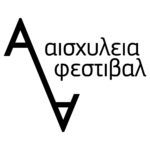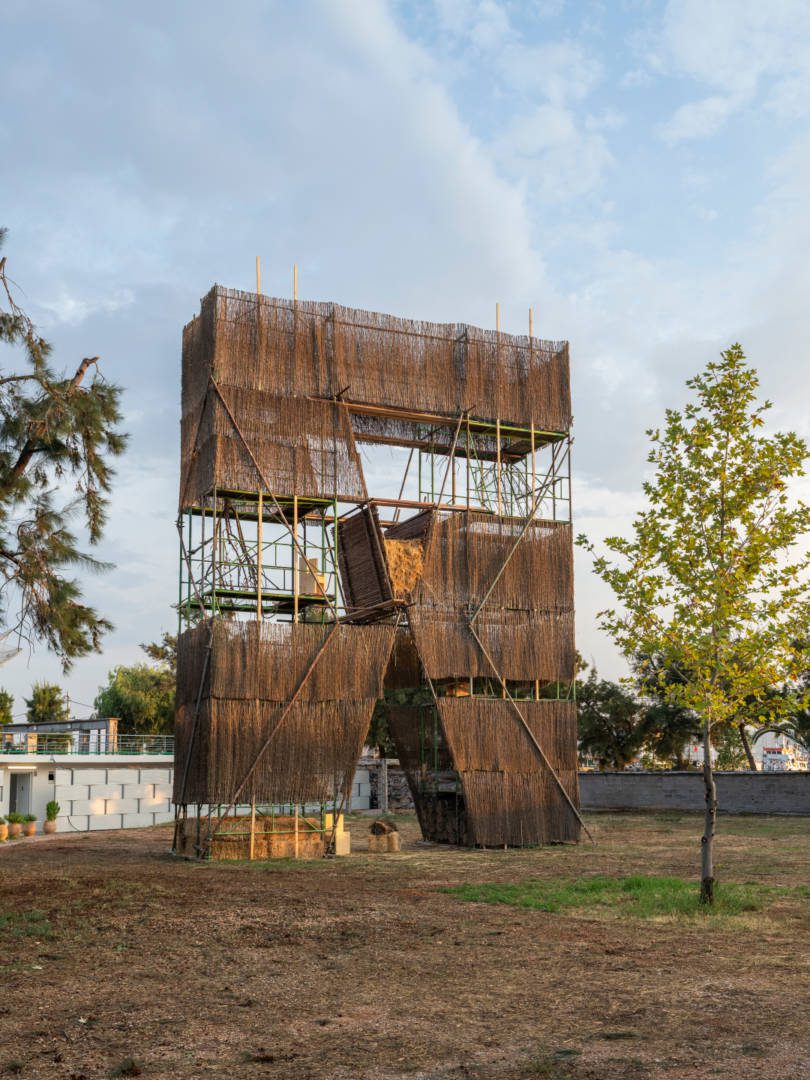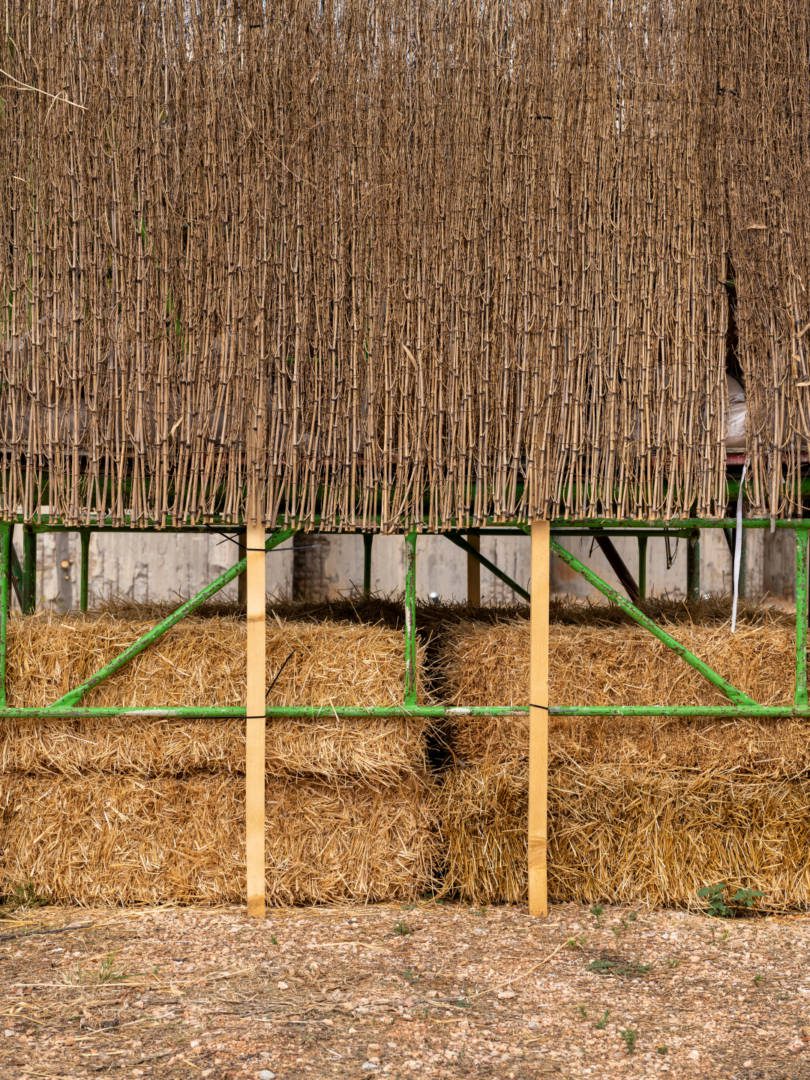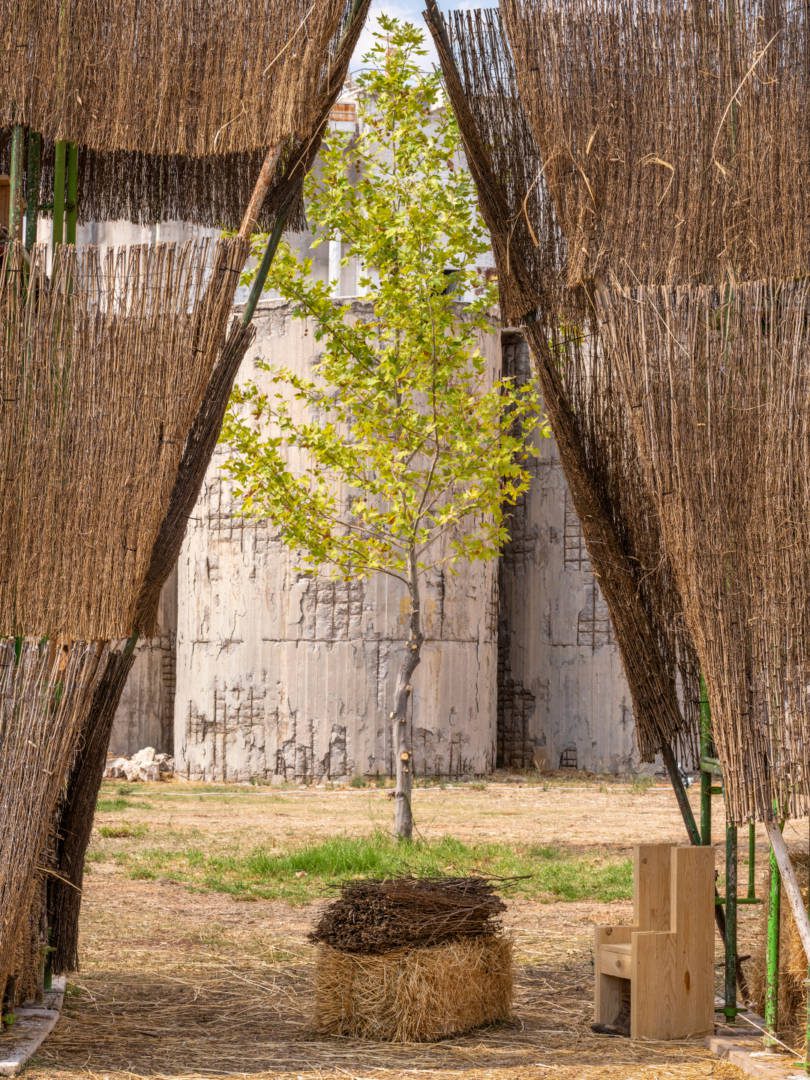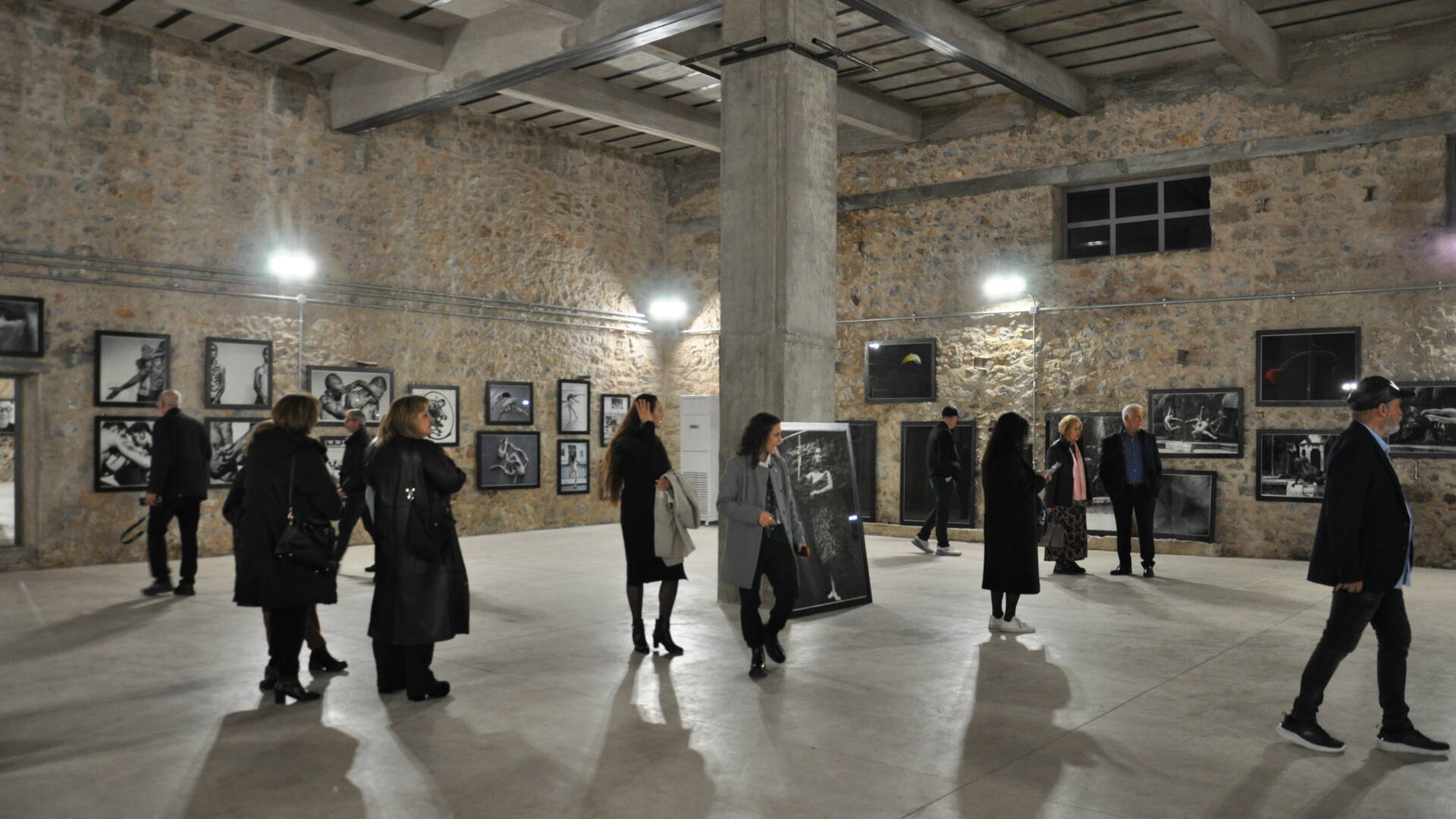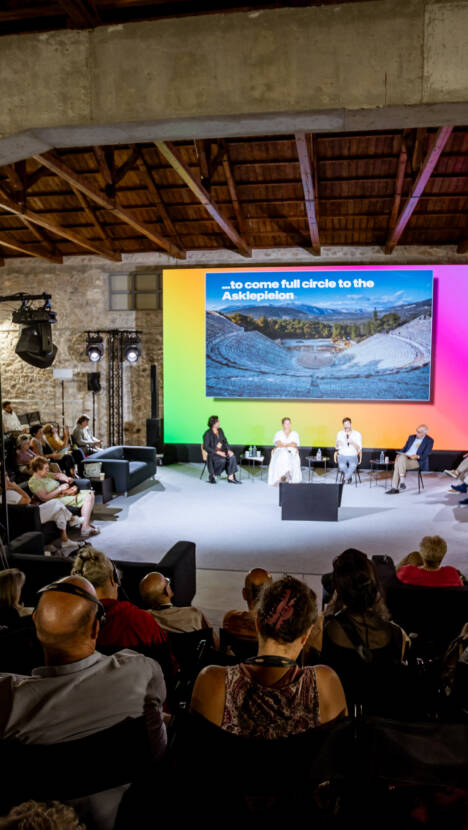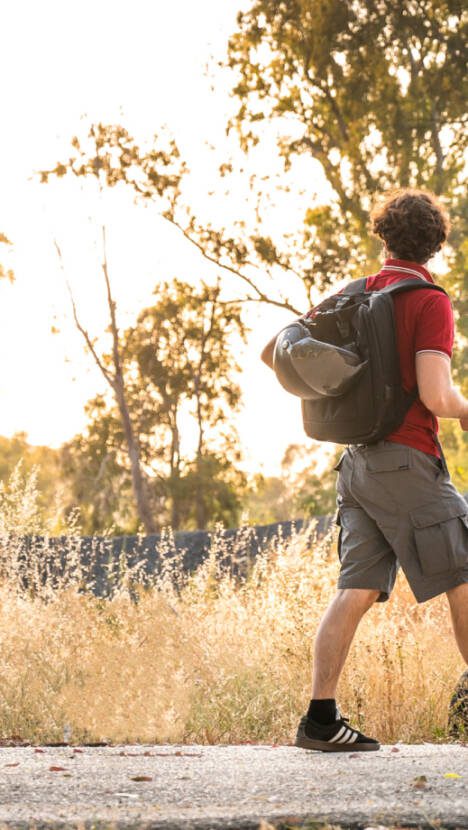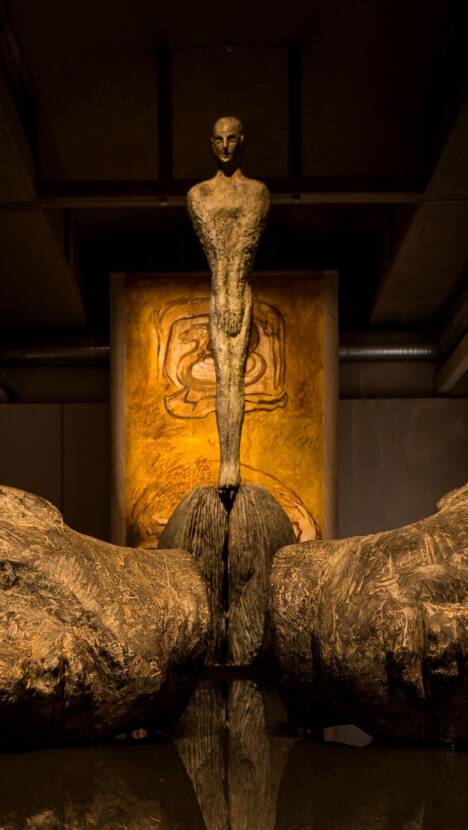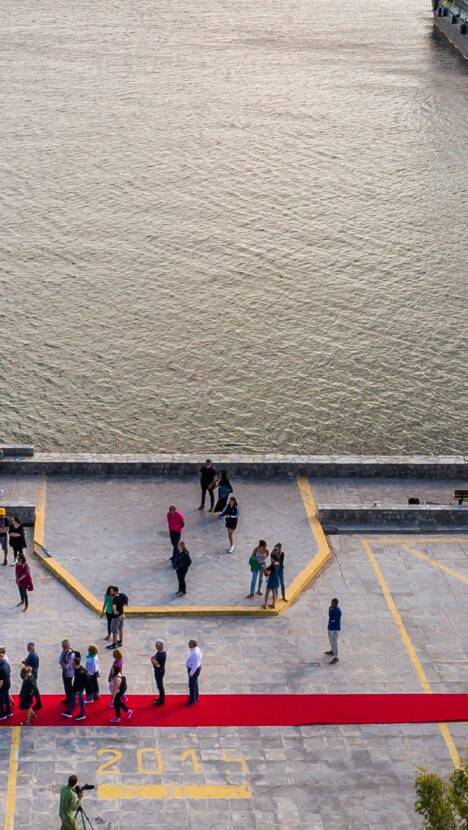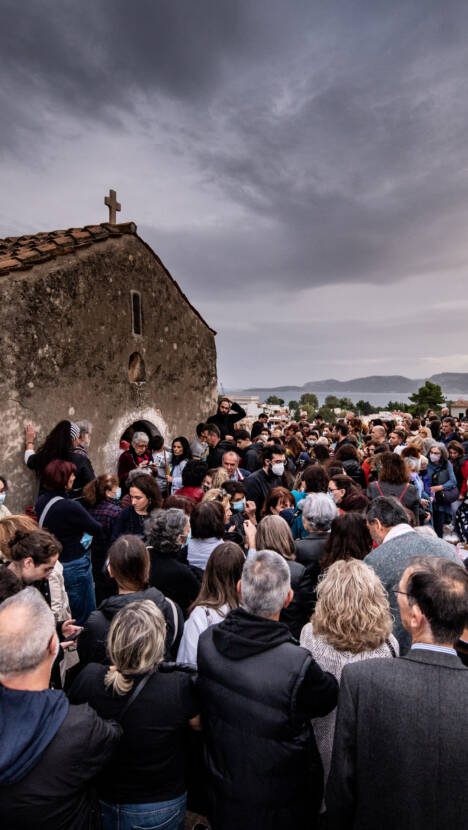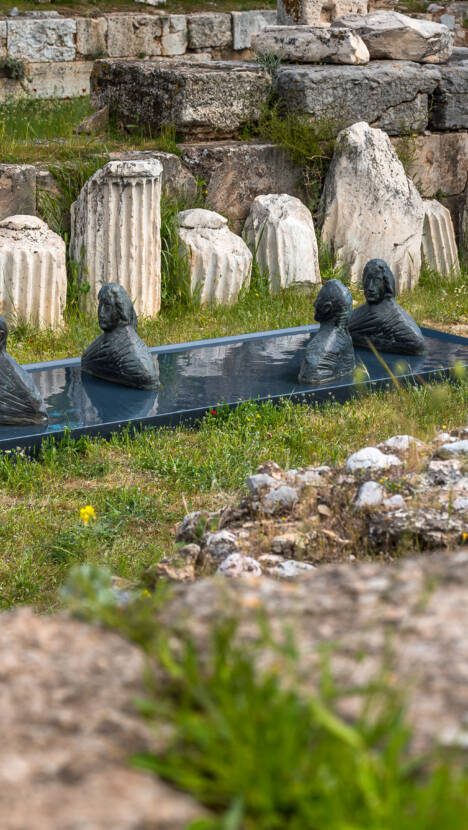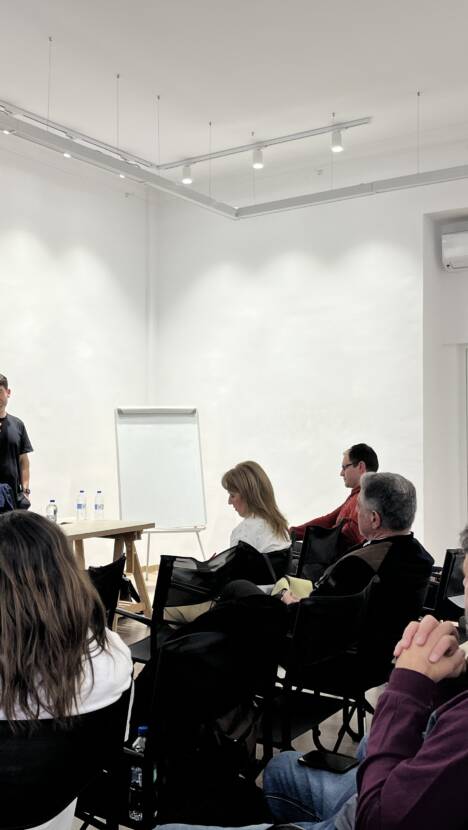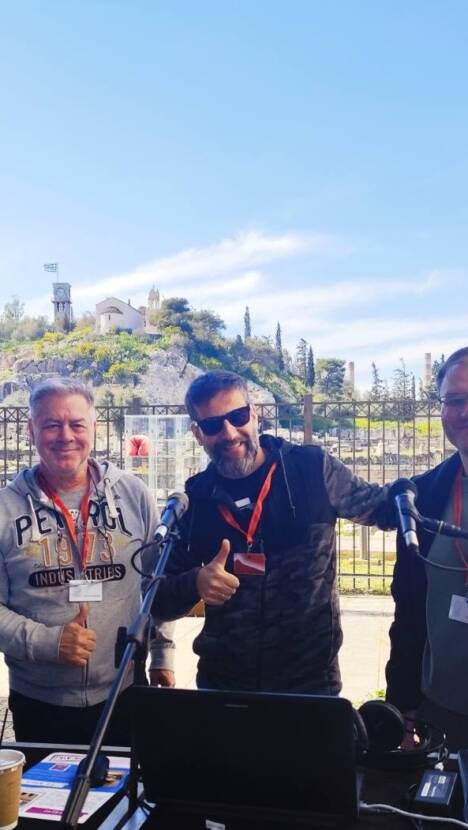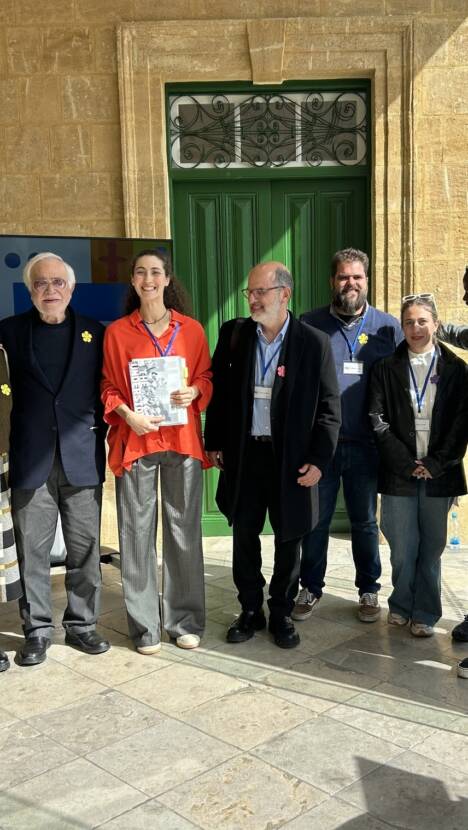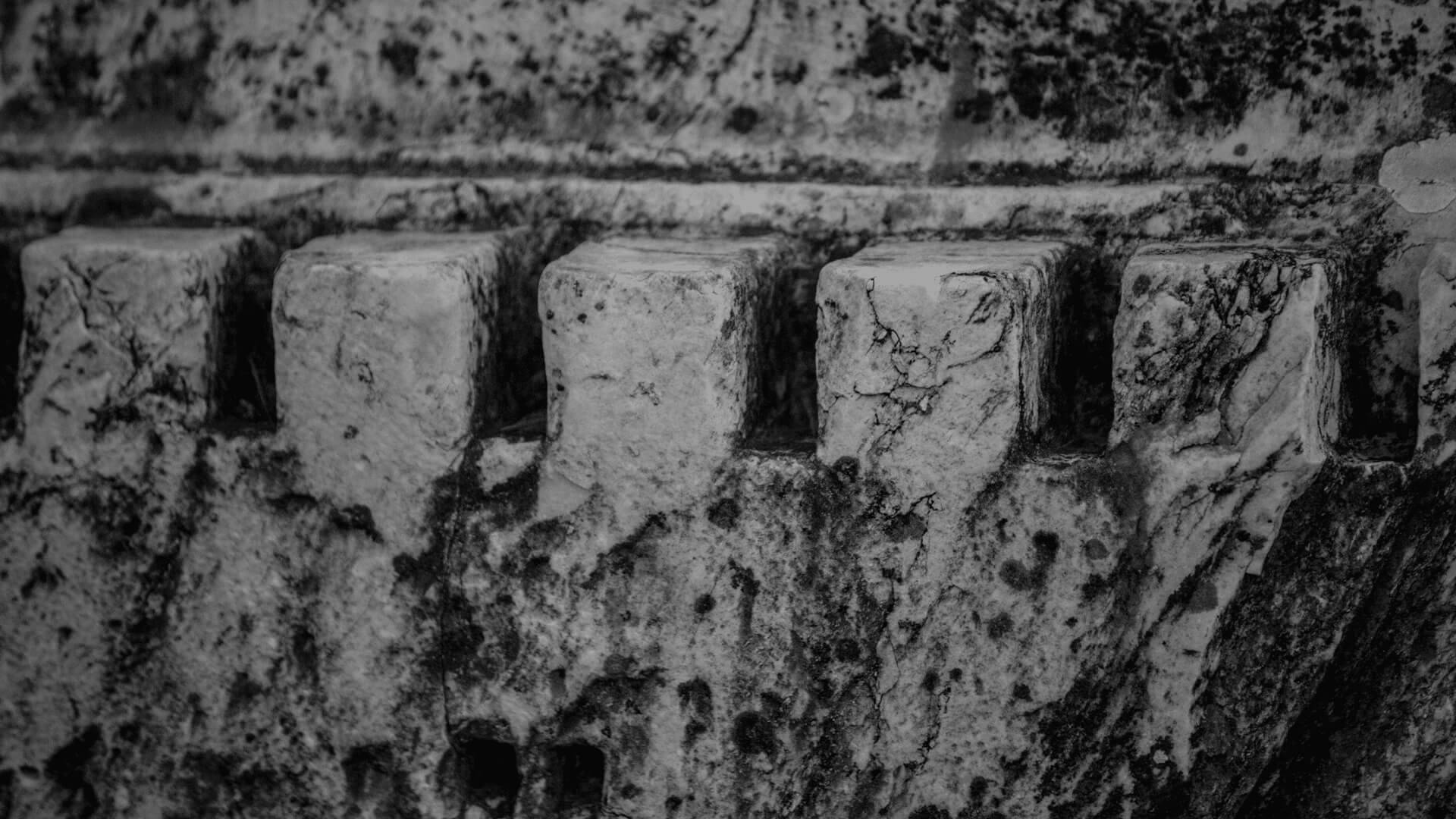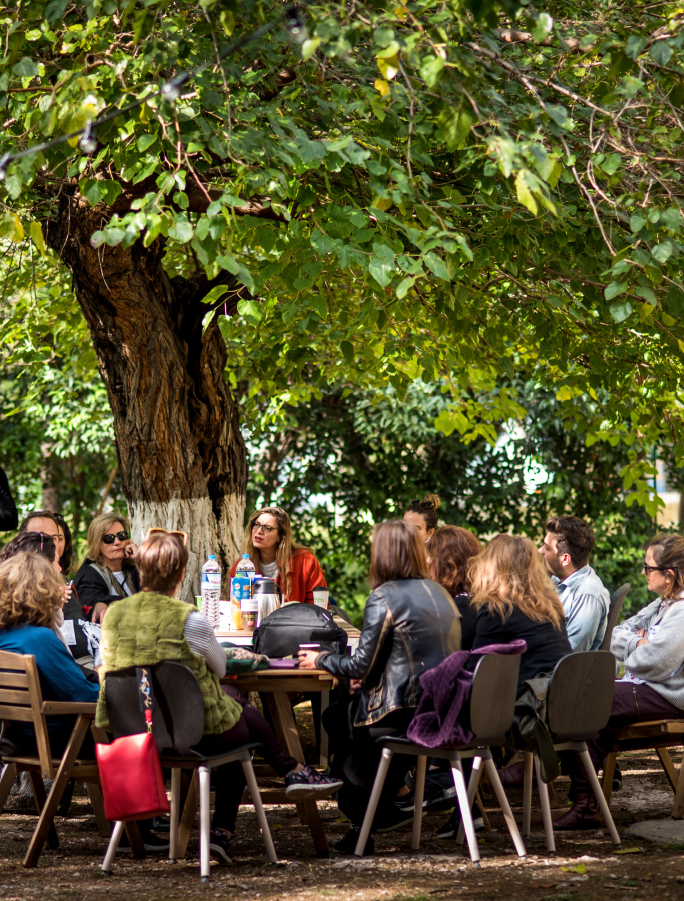The installation will be exhibited from Sunday, August 28 to Sunday, October 23,while its official opening will take place on Thursday, September 8, at 20.30. The installation draws inspiration from the myth of Demeter, the goddess of agriculture and fertility, and her daughter, Persephone. With a strict geometric delimitation that functions as a mechanism of gestation and harvesting, agricultural activities are linked to the erotic act. However, the erotic narrative in this monumental sculptural installation is not only underlined by the triangular shape of its structure, but is also found in the functionality of the construction. The “thighs of Demeter” function as an insect shelter with floors consisting of different recyclable materials and plants, which “seduce” all kinds of insects that assist in the pollination process.
With regards to the exhibition, visual artist Kostis Velonis states
The starting point for the sculptural installation “Straw falling on concrete floors” is the mythological and historical tradition of Elefsina and it is part of a larger study on the tectonic composition of animism. The goddess Demeter and her daughter, Persephone, offer the ideal narrative for the merging of the inorganic with the organic element and how seemingly different entities and physical phenomena, defined by movement and immobility, animate and inanimate matter, flourishing and withering, can overlap and not work in opposition.
The architectural scale of the construction connects the notion of moira as protractor measurement unit with the notion of moira as destiny and luck. The stakes of this upright and vertical anthropomorphic field do not only concern the surface of the earth and the height of a “wind-friendly” structure, but also address a reverse course, where height can be understood as an ultimate depth. All the agricultural activities that Demeter (earth mother) takes care of by ploughing, sowing and harvesting, also involve the chthonic element. Persephone and her stay in Hades for some months of the year reflect the continuation of a permanent existential narrative with the natural life cycle of plants as a symbol of birth, death and rebirth.
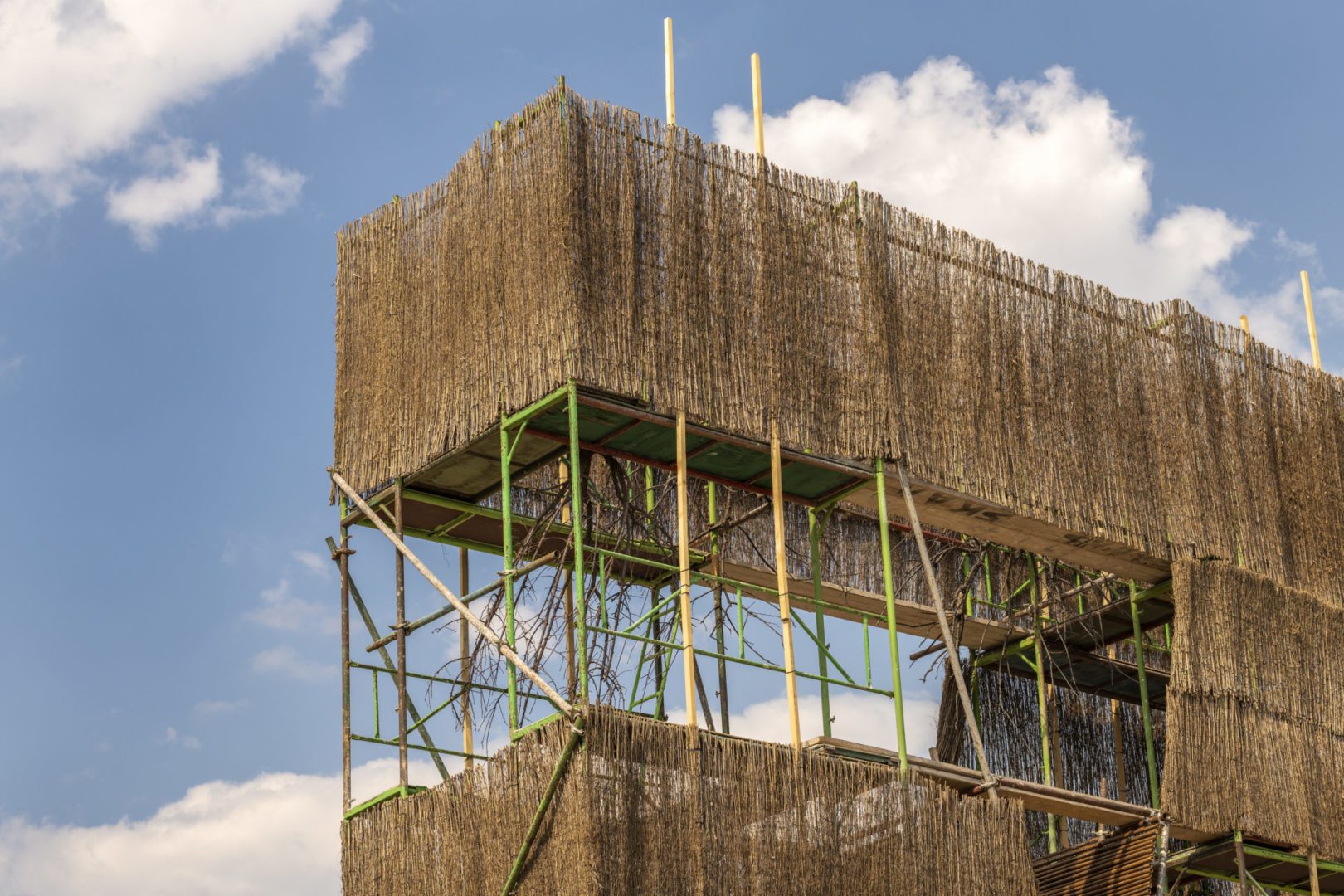
The history of Installation Art at Aeschylia Festival
In 2004, moving past the boundaries of its initial, purely performative, character, Aeschylia Festival included Installation Art as a structural element in its annual artistic programming, a fact that was embraced by the city and its inhabitants. The first visual arts installation that took place as part of the Festival was the work by Vana Xenou, entitled “Elefsis – Pass,” which was presented in the “Kronos” industrial complex. Since then, Elefsina has hosted various internationally renowned visual artists, such as Kalliopi Lemos, Marios Spiliopoulos, Leda Papaconstantinou, Diohante, Stephen Antonakos, Stefanos Tsivopoulos, Nikos Navridis, Michelangelo Pistoletto, Tarek Atoui, Emilia Bouriti, Eleni Panouklia, Danae Stratou, Aspasia Stavropoulou and Andreas Lolis. Building on this tradition, and highlighting Elefsina as an international meeting point for site-specific and site-sensitive artistic creation, the goal of 2023 Eleusis European Capital of Culture is to curate the visual installation of the Aeschylia Festival on an annual basis. This year, we are honored to collaborate with the distinguished visual artist Kostis Velonis.
